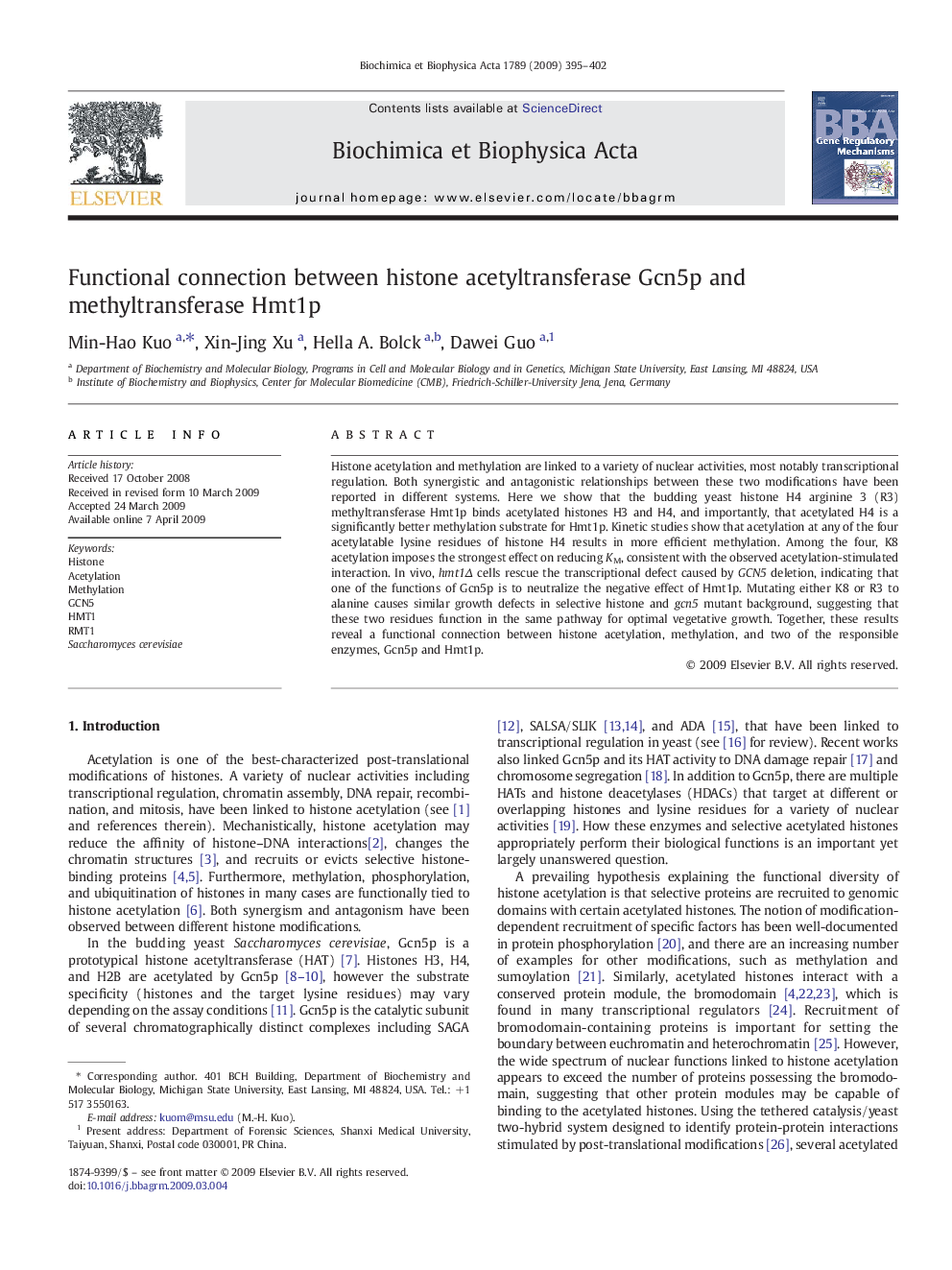| Article ID | Journal | Published Year | Pages | File Type |
|---|---|---|---|---|
| 1946898 | Biochimica et Biophysica Acta (BBA) - Gene Regulatory Mechanisms | 2009 | 8 Pages |
Abstract
Histone acetylation and methylation are linked to a variety of nuclear activities, most notably transcriptional regulation. Both synergistic and antagonistic relationships between these two modifications have been reported in different systems. Here we show that the budding yeast histone H4 arginine 3 (R3) methyltransferase Hmt1p binds acetylated histones H3 and H4, and importantly, that acetylated H4 is a significantly better methylation substrate for Hmt1p. Kinetic studies show that acetylation at any of the four acetylatable lysine residues of histone H4 results in more efficient methylation. Among the four, K8 acetylation imposes the strongest effect on reducing KM, consistent with the observed acetylation-stimulated interaction. In vivo, hmt1Î cells rescue the transcriptional defect caused by GCN5 deletion, indicating that one of the functions of Gcn5p is to neutralize the negative effect of Hmt1p. Mutating either K8 or R3 to alanine causes similar growth defects in selective histone and gcn5 mutant background, suggesting that these two residues function in the same pathway for optimal vegetative growth. Together, these results reveal a functional connection between histone acetylation, methylation, and two of the responsible enzymes, Gcn5p and Hmt1p.
Related Topics
Life Sciences
Biochemistry, Genetics and Molecular Biology
Biochemistry
Authors
Min-Hao Kuo, Xin-Jing Xu, Hella A. Bolck, Dawei Guo,
